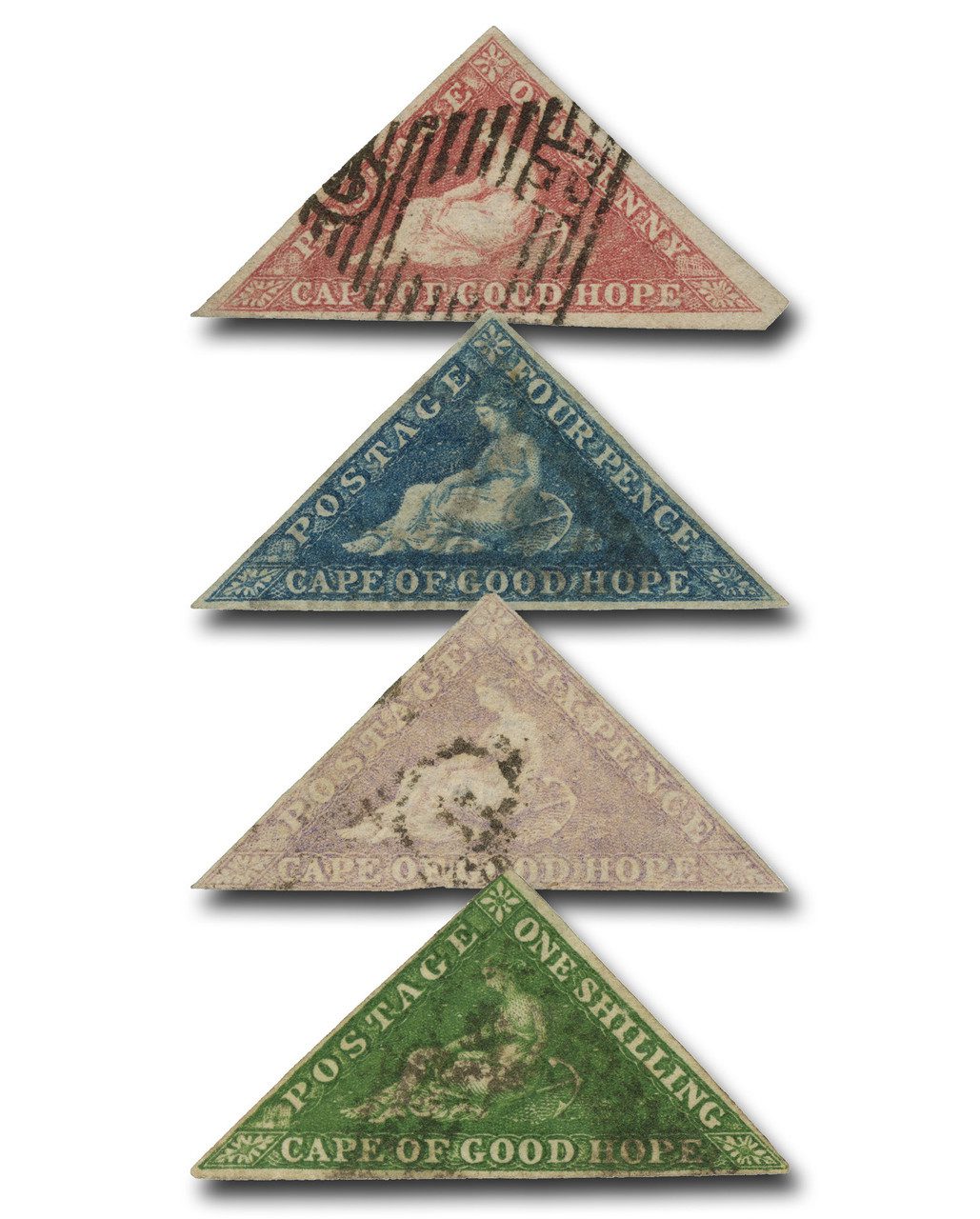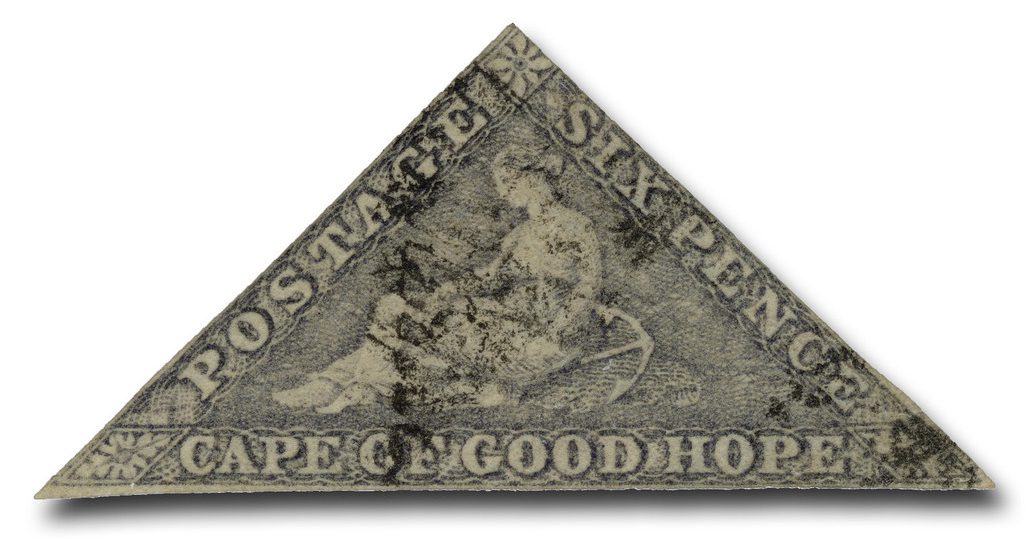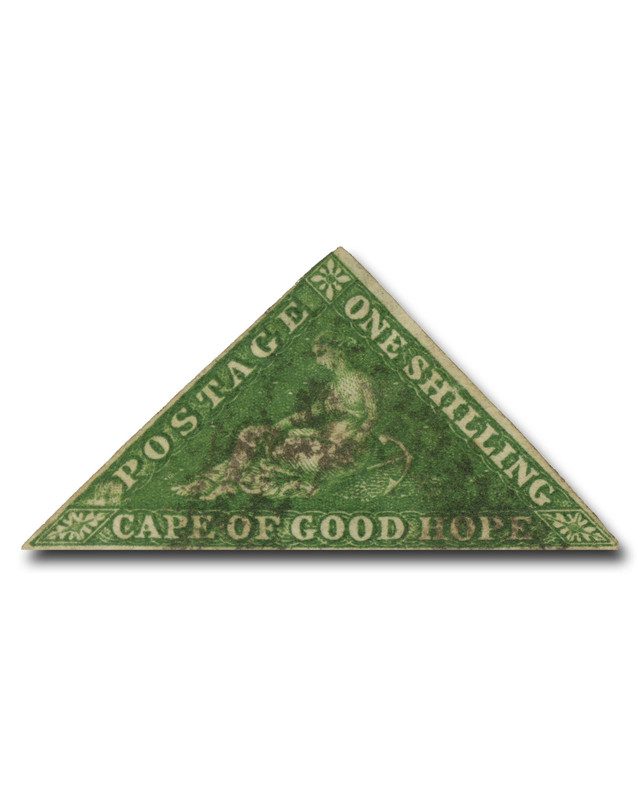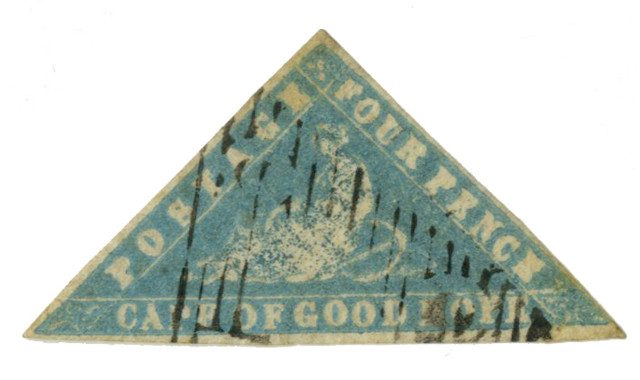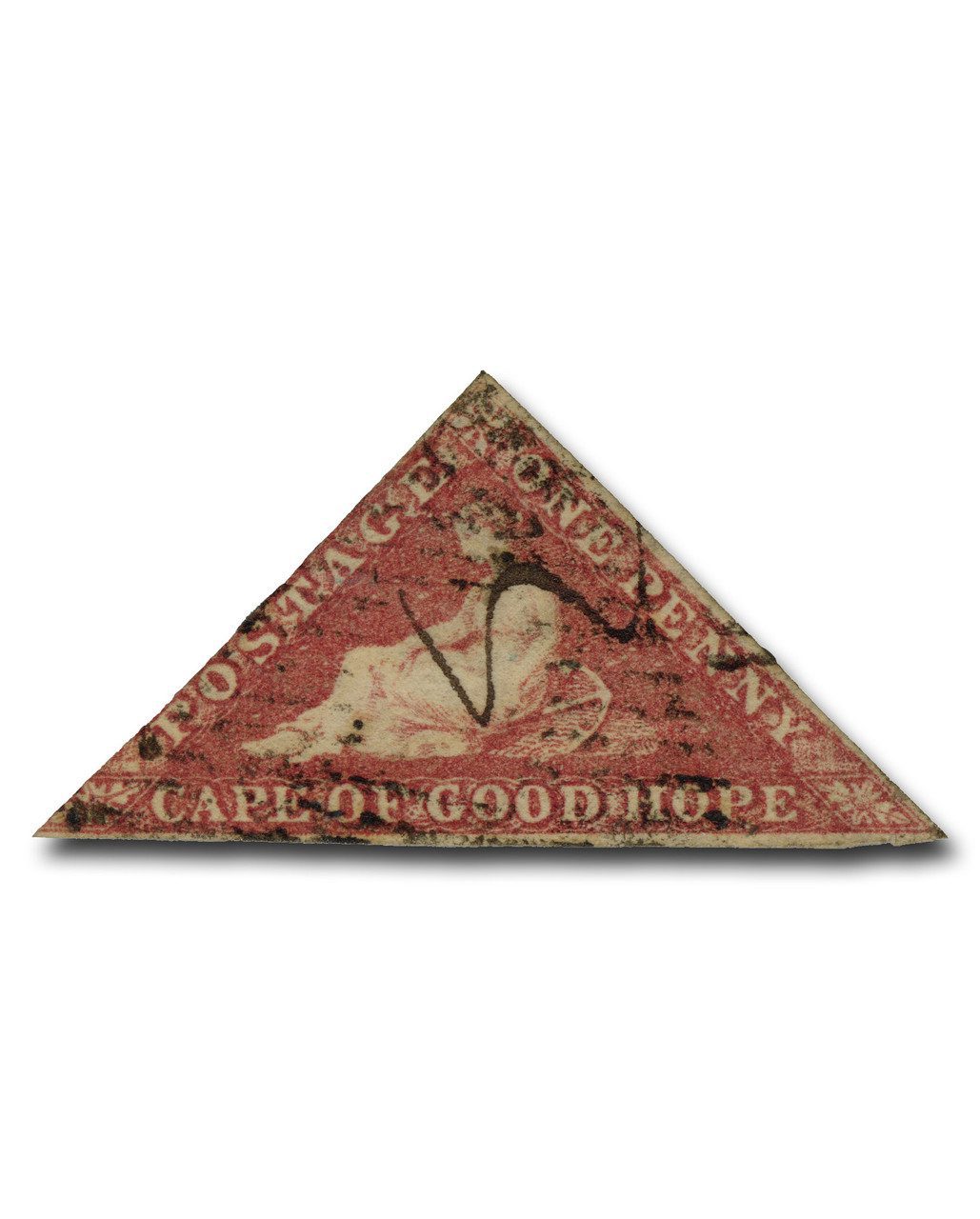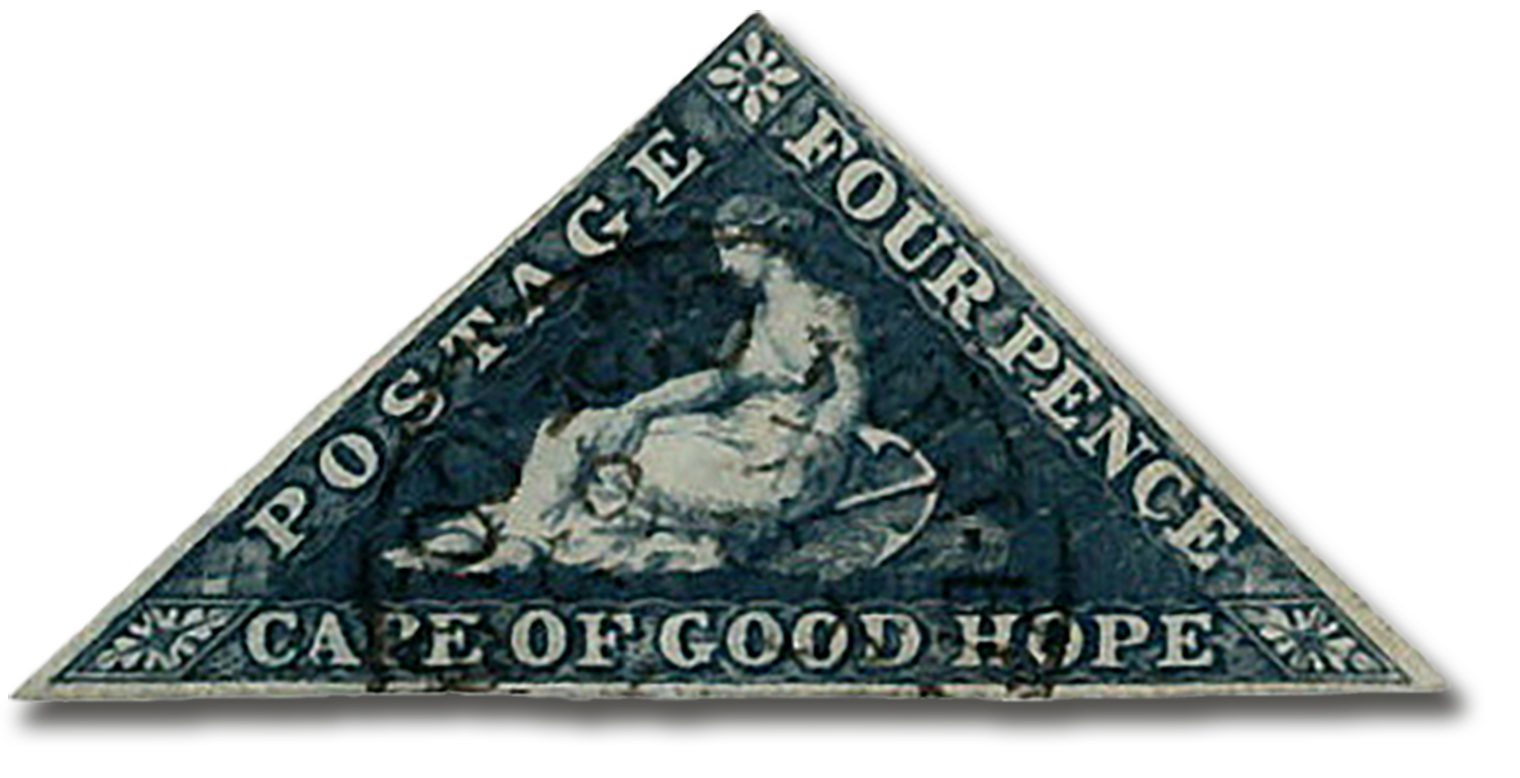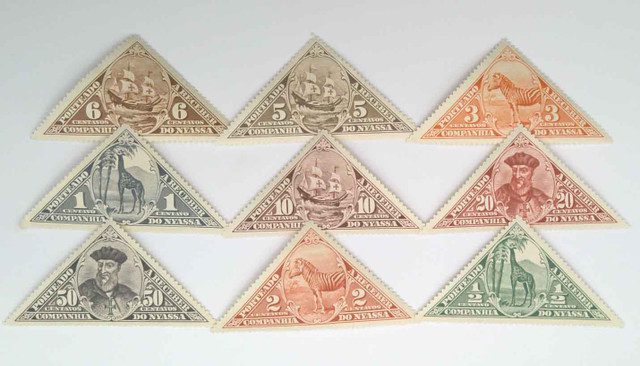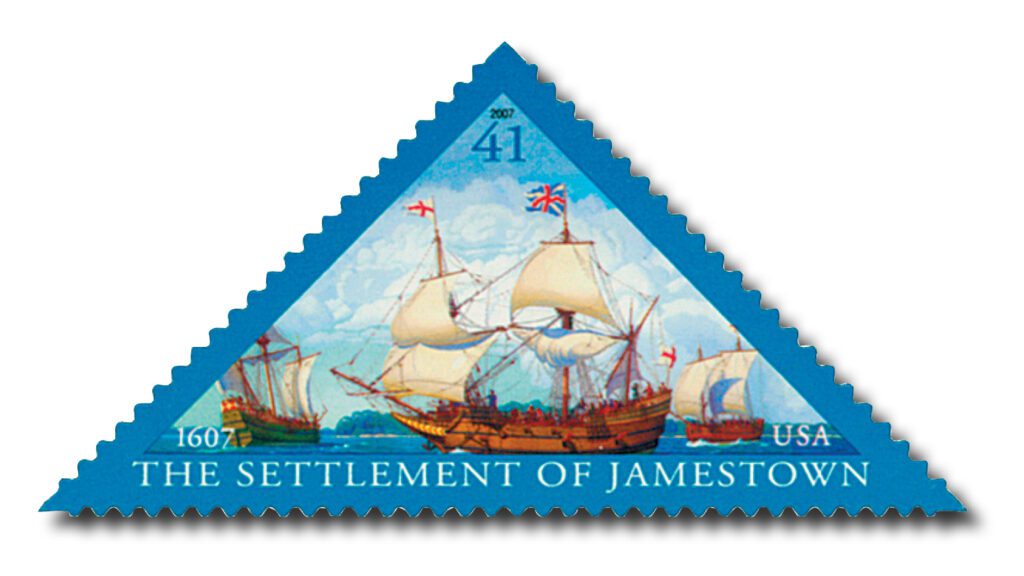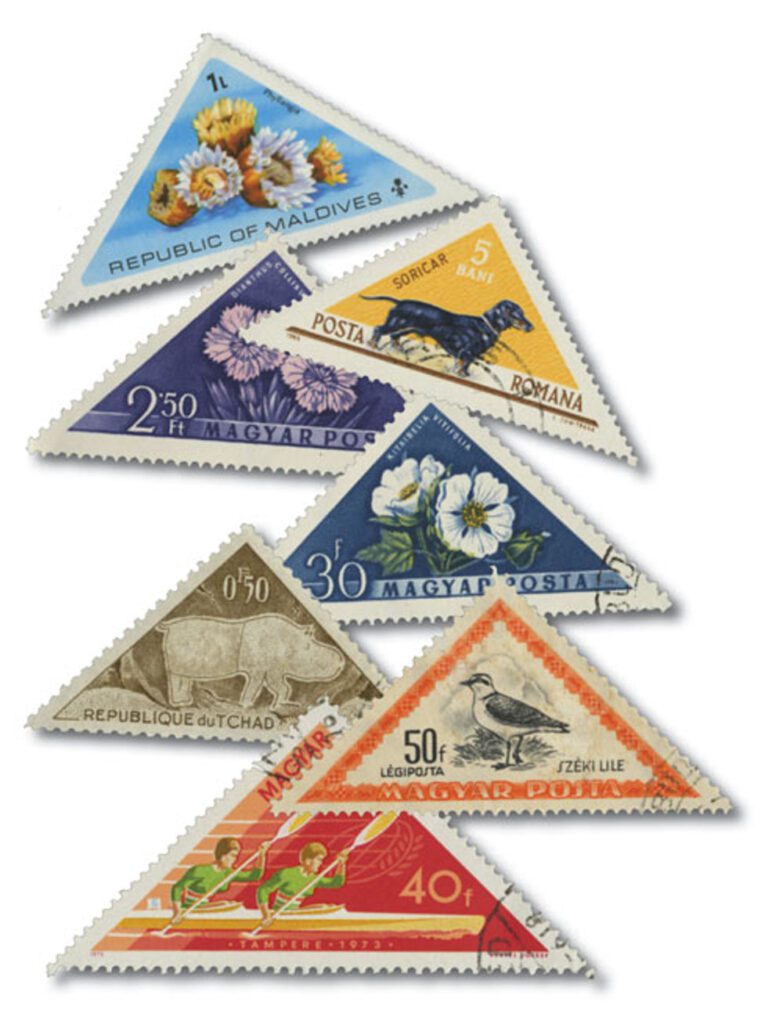On September 1, 1853, the Cape of Good Hope, a British colony at the southern tip of Africa, issued the world’s first triangle stamps. These were also the first adhesive postage stamps issued in Africa.
The Cape’s new triangular stamps were printed in 1 penny red and 4 pence blue values. Their form was an isosceles triangle, with two equal sides and a base, giving them a balanced and symmetrical appearance. These stamps became famous not only for their unusual shape but also for their graceful design, which depicted the allegorical figure of Hope seated on a rock, gazing across the sea.
Hope was a powerful symbol for the colony, representing optimism for the future, resilience, and the importance of maritime trade to the Cape’s prosperity. The choice of a triangle had a practical reason too: officials wanted the stamps to be immediately recognizable, even from a distance, so they would not be confused with the rectangular stamps of other colonies. The shape also made it easy for clerks to cut them apart from the printed sheets, which were arranged in rows without perforations.
The stamps were produced in England and shipped to the Cape of Good Hope. In 1860, the stamp supply was running low, and the local postmaster general knew it would take a while to get the stamps to him, so he placed an order. That June, the stamps arrived, but the bill of lading (similar to a receipt) was missing, so the stamps were placed in a warehouse and forgotten.
Early the next year, the stamp supply was so low, the postmaster decided to have some printed locally. The new stamps featured the same designs as the previous issues, but were engraved on steel affixed to wooden bases (from which their nickname “wood block” was derived). Sixty-four clichés (designs) were individually engraved for each denomination and glued to wood blocks for printing, resulting in several slight variations.
These cliches were produced for both the red one penny and blue four pence at the same time. At some point during the printing process, one cliché from each denomination was mistakenly placed in the wrong set, resulting in one color error per sheet of 64 stamps. While these wood block stamps are already scarce, these color errors are even more rare, valued at $200,000.
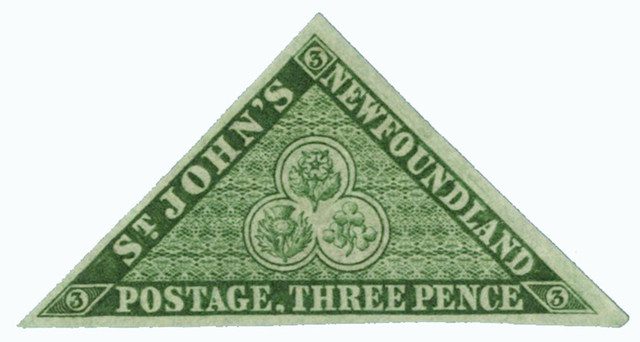
By 1863, the Cape of Good Hope had issued 12 triangle stamps. Just a few years later, the colony of Newfoundland issued its first triangle stamps in 1857. These stamps, like the Cape issues, were imperforate and arranged in sheets designed to be cut apart with scissors. Their triangular shape, like the Cape issues, was designed to set them apart from the rectangular stamps used elsewhere and to prevent confusion in the mails. The design carried deeper meaning as well: a grouping of the rose, thistle, and shamrock, representing England, Scotland, and Ireland. Since much of Newfoundland’s population traced its roots to those three nations, the choice of imagery emphasized the colony’s cultural heritage and ties to the British Isles.
All the early triangle stamps were issued imperforate. The world’s first perforated triangle stamps came from Ecuador in 1908. The set of seven bi-color stamps commemorated the opening of the Guayaquil-Quito Railway.
Some other interesting triangular stamp firsts over the years include:
- In 1916, Austria issued the first triangular stamps with the apex (point) at the bottom.
- Estonia issued the first triangular airmail stamps in 1920. Several countries soon followed suit, using the different shape to easily set the airmail stamps apart from standard postage.
- In 1924, Nyassa (part of present-day Mozambique) issued the first triangular postage due stamps.
- Czechoslovakia issued the first personal delivery triangular stamps in 1937, guaranteeing letters would be delivered personally to the addressee and no one else.
The United States didn’t issue its first triangle stamps until the Pacific 97 International Stamp Show issues of 1997. According to the postmaster general, “These innovative stamps represent our commitment to provide the philatelic community and the American public with exciting new designs and formats… Since 1847, when the first US postage stamps were issued, stamps have been rectangular in shape. We want the American public to know stamps aren’t square.” The two stamps honored the settlers who opened the American West by land and sea. They picture a mid-19th-century clipper ship and a US mail stagecoach – both of which are historically associated with mail delivery in California.
A decade later, the USPS produced its second triangle issue, honoring the settlement of Jamestown. That stamp pictured the three ships, Susan Constant, Godspeed, and Discovery, that brought English colonists to America in 1607. Calling their settlement Jamestown, after England’s King James I, the colonists founded the first permanent settlement in the new world. The stamp commemorated Jamestown’s 400th anniversary and honors the colony’s first triangular-shaped fort.
Today, collectors prize these interesting pieces of stamp history, collecting them in a variety of shapes, including right angles, isosceles, equilateral, obtuse, acute, and scalene triangles. So far, countries around the world have issued more 1,600 triangle stamps.
| FREE printable This Day in History album pages Download a PDF of today’s article. Get a binder or other supplies to create your This Day in History album. |
Discover what else happened on This Day in History.

